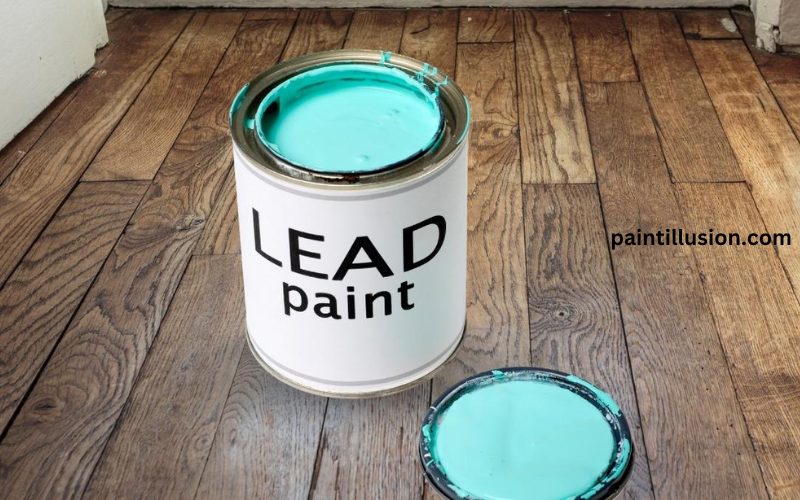Lead paint has been a common household feature for decades, but its presence can pose serious health risks, especially for young children and pregnant women. Identifying lead paint in your home is crucial to ensure a safe living environment for you and your family. In this article, we will explore what lead paint is, the dangers it presents, and how you can identify it in your own home. By taking these steps, you can protect yourself and your loved ones from the harmful effects of lead paint exposure.
What is Lead Paint?
Lead paint is a type of paint that contains high levels of lead, a toxic metal. It was commonly used in homes built before 1978 when the U.S. banned the use of lead-based paint in residential properties. Lead was added to paint to enhance its durability and color retention. However, over time, this paint can deteriorate, releasing lead dust and flakes into the air and onto surfaces. Lead paint can be found on walls, windows, doors, and even on toys or furniture.
The Dangers of Lead Paint
Exposure to lead paint can have severe health consequences, particularly for children under the age of six. Lead is a neurotoxin that can affect the development of the brain and nervous system. Children who are exposed to lead paint may experience learning disabilities, developmental delays, and behavioral problems. Pregnant women who come into contact with lead paint are also at risk, as lead can pass from the mother to the unborn child, potentially causing miscarriage or developmental issues.
How to Identify Lead Paint in Your Home
Testing for Lead Paint
If your home was built before 1978, it is essential to test for lead paint. There are several methods you can use to determine if lead paint is present in your home. One option is to hire a certified lead inspector or risk assessor who will use specialized equipment to analyze the paint. Another option is to purchase a lead paint test kit from a hardware store. These kits typically include swabs that change color when they come into contact with lead.
Signs of Lead Paint
While testing is the most accurate way to identify lead paint, there are some signs you can look for as well. Lead paint is often characterized by its distinctive chalky texture and is more likely to chip or peel compared to non-lead paint. It can also have a sweet or metallic smell. Additionally, lead paint tends to be found in older homes, so if your house was built before 1978, the chances of having lead paint are higher.
Common Areas Where Lead Paint is Found
Lead paint is commonly found on various surfaces in older homes. It can be present on walls, both interior and exterior, as well as on trim, doors, and windows. In particular, windowsills and frames are notorious for containing lead paint. This is because they are frequently opened and closed, causing friction that leads to paint deterioration. It is crucial to pay special attention to these areas when identifying lead paint in your home.

Health Risks Associated with Lead Paint Exposure
Exposure to lead paint can have severe health risks, especially for children and pregnant women. Even low levels of lead in the blood can cause irreversible damage to the brain and nervous system. In children, this can lead to reduced IQ, learning disabilities, and behavioral problems. Pregnant women exposed to lead paint are at risk of miscarriage, premature birth, or giving birth to a baby with developmental issues. Adults exposed to lead paint may experience high blood pressure, kidney damage, and fertility problems.
Removing Lead Paint Safely
If you have identified lead paint in your home, it is crucial to take steps to remove it safely. Removing lead paint can be hazardous, as it can release lead dust and fumes into the air if not done correctly. It is highly recommended to hire a professional with expertise in lead paint removal. They will follow specific protocols to minimize exposure and ensure the safe removal of lead paint from your home. DIY removal methods can often do more harm than good, as they may result in increased lead dust and potential contamination.
Hiring a Professional for Lead Paint Removal
When hiring a professional for lead paint removal, it is essential to choose a certified contractor who specializes in lead abatement. These professionals have the necessary training and equipment to safely remove lead paint from your home. They will follow strict guidelines set by regulatory agencies to minimize the risk of lead exposure during the removal process. Additionally, hiring a professional ensures that the job is done thoroughly and efficiently, so you can have peace of mind knowing that your home is free from lead hazards.
Conclusion
Identifying lead paint in your home is a crucial step in protecting yourself and your family from the harmful effects of lead exposure. Lead paint, commonly found in homes built before 1978, can pose serious health risks, especially for young children and pregnant women. By testing for lead paint, looking for signs of its presence, and hiring a professional for safe removal, you can ensure a safe living environment. Remember, the health and well-being of your loved ones should always be a top priority.

